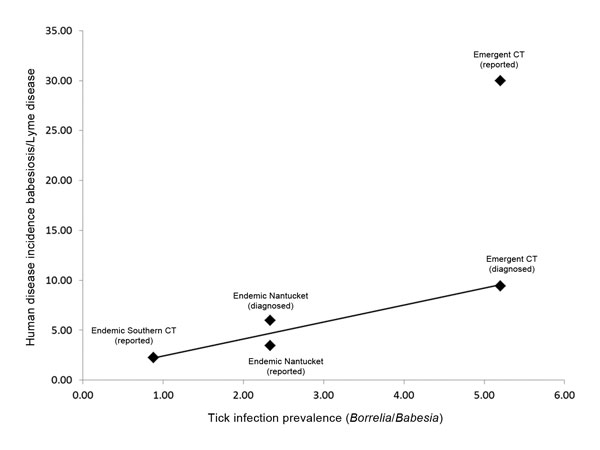Volume 20, Number 2—February 2014
Research
Monitoring Human Babesiosis Emergence through Vector Surveillance New England, USA
Figure 2

Figure 2. Linear regression model of the human ratio (disease incidence rate ratio) and the tick ratio (tick infection prevalence ratio)The regression model includes state-reported case data from disease-endemic sites and case diagnoses from both medical practicesThe human ratio derived from state-reported case data in the emerging area (northeastern Connecticut) is also displayed.
Page created: January 17, 2014
Page updated: January 17, 2014
Page reviewed: January 17, 2014
The conclusions, findings, and opinions expressed by authors contributing to this journal do not necessarily reflect the official position of the U.S. Department of Health and Human Services, the Public Health Service, the Centers for Disease Control and Prevention, or the authors' affiliated institutions. Use of trade names is for identification only and does not imply endorsement by any of the groups named above.